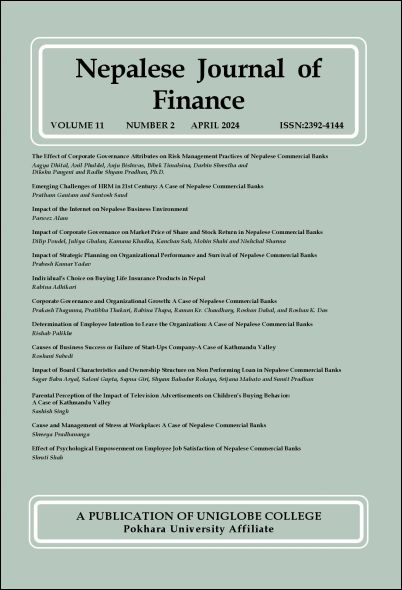Determination of Employee Intention to Leave the Organization: A Case of Nepalese Commercial Banks
DOI:
https://doi.org/10.3126/njf.v11i2.68821Keywords:
employee intention to leave, work ambiguity, work life conflict, peer relation, working environment, job insecurity, work overloadAbstract
This study investigates the determinants of employee intention to leave the organization in the context of Nepalese commercial banks. Employee intention to leave is the dependable variable. The selected independent variables are work ambiguity, work life conflict, peer relation, working environment, job insecurity and work overload. The primary source of data is used to assess the opinions of the respondents regarding the different factors associated with employee turnover intention. The study is based on primary data of 121 respondents. To achieve the purpose of the study, structured questionnaire is prepared. The correlation coefficients and regression models are estimated to test the significance and importance of work ambiguity, work life conflict, peer relation, working environment, job insecurity and work overload on employee intention to leave the organization.
The study showed that work ambiguity has a positive impact on consumer employee turnover intention. It indicates that higher the work ambiguity, higher would be the employee turnover intention. Similarly, work life conflict has a positive impact on employee intention to leave indicating that increase in work life conflicts leads to increase in employee intention to leave the organization. Likewise, job insecurity has positive impact on employee turnover intention. This implies that higher the job insecurity, higher would be the employee turnover intention. Likewise, this study also showed that work overload has a positive impact on employee intention to leave. This revels that increase in work overload leads to increase in employee turnover intention in the context of Nepalese commercial banks. However, peer relationship has a negative impact on employee intention to leave. It indicates that healthy relationship among the colleagues leads to decrease in employee intention to leave. Moreover, working environment has a negative impact on employee turnover. It means that supportive working environment leads to decrease in employee intention to leave.




